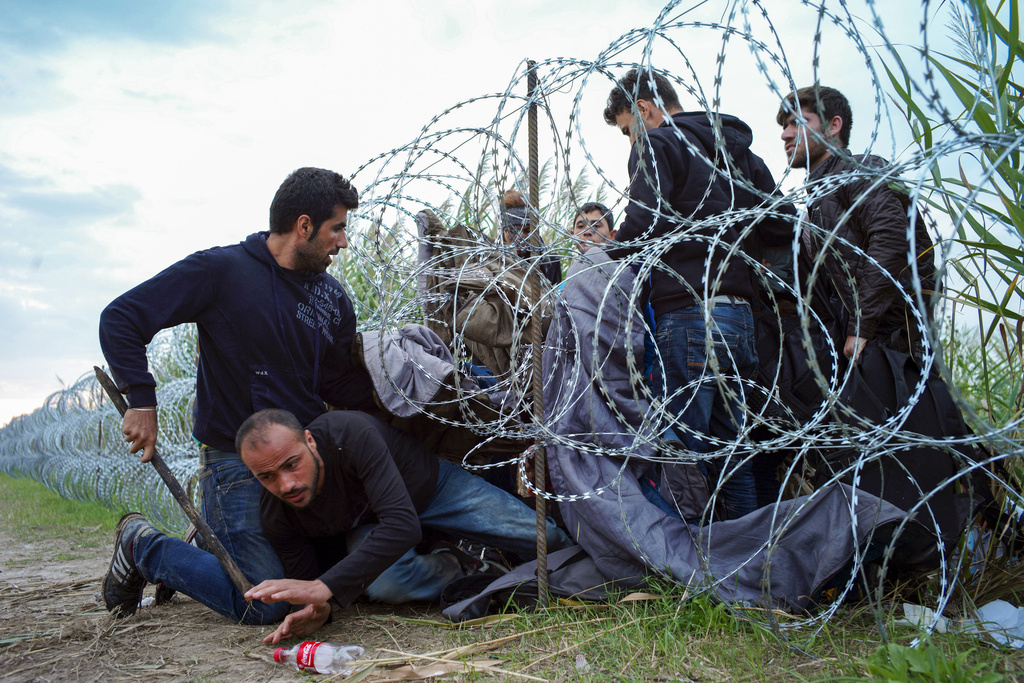Bosnia-Herzegovina, located at the heart of the Balkan migration route, is facing a dramatic struggle to manage the influx of people. Migrants are constantly arriving in the country. In the meantime, the people of Vojvodina living near the Serbian-Hungarian border are hoping that the nightmare that previously accompanied their daily lives will not return, when the forest around Subotica was filled with sounds of migrants shooting guns and people smugglers passed through the area.
According to the authorities, 24,115 migrants have been registered in the country so far this year, which is almost the same as last year’s data.
This number clearly shows that migration pressure has not decreased significantly in the region.
According to Zarko Laketa, director of the service dealing with foreign nationals, most migrants submit an asylum application after registration, but this is often only used to temporarily stay in the country before continuing on to the European Union.
The Balkan route continues to play an important role in migration. Migrants usually come from Greece and Bulgaria and enter Bosnia and Herzegovina through Serbia. There are currently around 1,129 migrants in the country’s camps, although this number fluctuates, usually between 1,000 and 1,300.
Migrants are constantly arriving in Bosnia
The distribution of migrants within the country is not even. Most of them, some 776 in number, are staying in Sarajevo Canton, while Una-Sana Canton currently has 306 migrants.
According to an analysis by the Foreigners Service, the majority of migrants are between the ages of 19 and 35 and come from countries such as Syria, Afghanistan, Pakistan, Iraq, Bangladesh and Iran.
Otherwise, Laketa does not expect any significant changes in this regard in the near future. The migration situation is expected to remain active.
Speaking to the press, the director also touched on the details of asylum procedures. The process is relatively simple: After registering and recording biometric data, the migrant can indicate that they would like asylum, for which they will receive a certificate. They have 15 days to submit a formal request to the relevant department of the Ministry of Security.
However, Laketa pointed out that many people abuse this opportunity and use the 15-day period to rest in the camps and prepare for the further journey to the EU.
Illegal immigrants clash with each other
Conflicts between migrants occasionally occur, but thanks to the close cooperation of the authorities, major incidents can be prevented or dealt with quickly in Bosnia. Interestingly, these conflicts arise mainly between immigrants, usually due to a dispute over certain territories. The expert emphasized that these cases do not pose a direct threat to the locals.
Overall, it can be said that Bosnia and Herzegovina remains a key transit country on the Balkan migration route. However, managing the migration situation is a serious challenge for the country, both from a logistical and financial point of view.
Maintaining the camps, providing basic care and operating the registration processes require significant resources. There is also pressure on local communities, especially in regions where migrants are present in larger numbers.
Terror and fear reigned in Serbia as well
To illustrate how tense the situation is, migrants previously occupied several houses in Serbia and appeared in large numbers in public squares and shops. Some parts of the northern settlements of Vojvodina, such as Szabadka, Horgos and Zombor, have become migrant ghettos.
People-trafficking gangs take advantage of the situation, demanding large sums of money in exchange for being able to get the migrants across the border, even with armed help. During an incident in the summer of 2022, a shooting occurred in Subotica involving fatalities.
Conflicts also occurred in cities. For example, an armed confrontation took place in a central parking lot in Subotica. During that time, locals were constantly exposed to gunfire at night and continued violence during the day.
As the situation worsened, Serbia promised state intervention, and authorities launched a large-scale crackdown on the migrants, confiscating their weapons and dismantling their illegal camps. The Serbian authorities aim to create a safe environment, although the locals fear that as soon as the strictness is eased, migrants may return.






